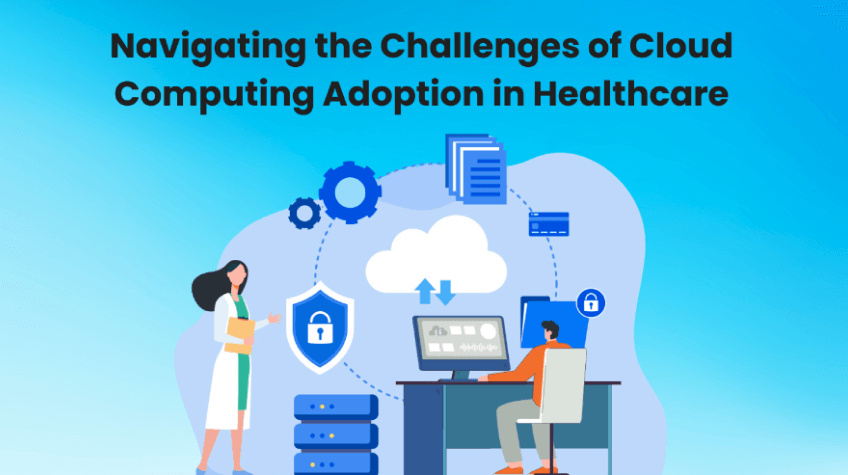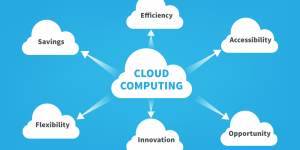
Cloud Computing adoption has become a game-changing force in healthcare, where patient care is of utmost importance and information accessibility is critical. A paradigm shift in technology associated with efficiency and flexibility—cloud computing—is now impacting the healthcare industry. Integration of Cloud Computing in Healthcare is becoming increasingly recognised as a viable answer to healthcare providers’ twin challenges—managing massive amounts of patient data and delivering seamless services.
In this blog, we will examine the complexities of cloud adoption in healthcare, including its advantages, difficulties, and crucial strategic factors.
Table of Contents
The Essence of Cloud Computing in Healthcare
Cloud computing uses distant, internet-hosted computers for data processing, management, and storage. This results in a paradigm change in the healthcare industry from conventional on-premises data management to a more adaptable and scalable architecture.
The inherent characteristics of cloud computing in the healthcare sector are in line with the sector’s demands for data-driven decision-making, collaboration, and on-demand access to information.
Explore the challenges of healthcare cloud computing
Here is the list of challenges you can address when you decide for cloud computing in healthcare;
1. Overcoming Initial Hurdles
Although cloud computing has great potential for the healthcare industry, there are obstacles to its widespread implementation. The first stages include developing a solid plan and assessing the current infrastructure carefully. Many healthcare companies face the challenge of the ingrained legacy systems, which need a cautious transition to guarantee a smooth integration with cloud-based solutions. Furthermore, handling privacy and data security issues is critical, particularly when working with sensitive patient data.
2. Security Concerns in Cloud Computing Adoption
Healthcare cloud computing presents an off-site data storage paradigm that raises valid security and regulatory issues. Sensitive patient data is entrusted to healthcare practitioners, and data integrity breaches may have dire repercussions. Thus, it becomes essential to comprehend and reduce any security threats throughout the cloud adoption process. A complete security plan must include strong encryption, adherence to industry standards, and the establishment of strict access restrictions.
3. Enhancing Interoperability
In the healthcare industry, interoperability—the capacity of various systems to communicate and use information—remains a constant concern. These interoperability issues may be resolved using cloud computing, expediting data exchange and collaboration. By enabling seamless communication across diverse systems, cloud-based solutions may contribute to a more integrated healthcare ecosystem and encourage a patient-centred approach to treatment.
4. Scalability for Future Demands
Scalability is one of the inherent benefits of cloud computing. Data quantities fluctuate often in healthcare companies, especially at peak times. Cloud solutions provide maximum performance and cost-efficiency by offering the flexibility to scale up or down depending on demand. This flexibility is especially important in the healthcare industry since patient outcomes may be significantly impacted by the capacity to scale resources in response to changing needs.
5. Navigating Vendor Selection Challenges
A key component of effective cloud adoption in healthcare is choosing the appropriate cloud service provider. Several solutions are available on the market, each with unique advantages and disadvantages. When selecting a provider, healthcare businesses must pay close attention to details like data security protocols, compliance capabilities, and scalability characteristics. A careful examination guarantees that the chosen supplier complies with the healthcare sector’s particular demands and legal framework.
6. Ensuring Regulatory Compliance
Numerous laws and guidelines aimed at protecting patient interests bind the healthcare sector. Healthcare providers who want to use cloud computing must traverse a challenging terrain of regulatory restrictions. Maintaining regulatory compliance is a non-negotiable component of cloud computing in healthcare industry, from the General Data Protection Regulation (GDPR) to the Health Insurance Portability and Accountability Act (HIPAA).
7. Strategic Planning for Successful Implementation
Careful strategic planning is essential for successfully using cloud computing in the healthcare industry. When migrating from old systems to cloud-based solutions, a gradual strategy that minimises possible interruptions is necessary. This calls for comprehensive staff training, change management procedures, and a strong communication plan to ensure all stakeholders are on board with the new technology paradigm.
Conclusion
In summary, integrating cloud computing in healthcare requires thoughtful analysis of obstacles and proactive steps to overcome them. The advantages are many and include increased cooperation and data accessibility. But a well-thought-out plan that handles security issues guarantees compliance and prepares for a smooth transition, which is necessary for success. The potential benefits of a more integrated, scalable, and effective healthcare ecosystem outweigh the constraints healthcare providers face, making cloud computing adoption a crucial first step in determining the direction of patient care.






